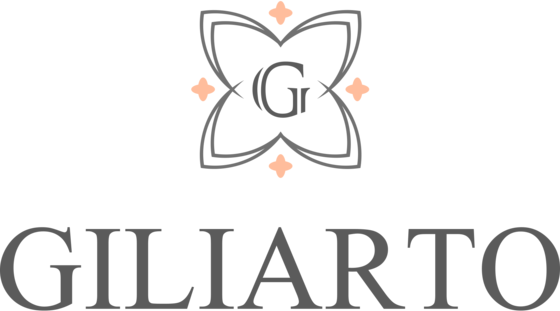How Much Are Sapphires Really Worth

You're shopping for a sapphire engagement ring and suddenly realize prices are all over the map. One stone costs $200, another looks similar but runs $20,000. What gives? Sapphire pricing isn't arbitrary – it follows specific rules based on characteristics most people don't know to look for. Understanding what drives value helps you spot fair deals and avoid overpaying.
The Short Answer: Sapphires Range Wildly
A sapphire can cost anywhere from $50 per carat to $50,000+ per carat. That's not a typo. The gap between low-end and premium sapphires is massive because "sapphire" is a broad category covering everything from mediocre stones to museum-quality gems.
For context, most sapphires in quality jewelry fall between $400 to $6,000 per carat. But let's break down what actually determines where a specific stone lands on that spectrum.
Color: The Biggest Value Driver
Color accounts for roughly 50-70% of a sapphire's value. Not all blues are created equal, and sapphires come in way more colors than most people realize.
Blue Sapphires
The classic. When someone says "sapphire," they usually mean blue. But the shade matters enormously.
Cornflower blue and royal blue command top prices. These are vivid, medium to medium-dark blues with excellent saturation. A top-quality cornflower blue sapphire from Kashmir (more on origin later) can hit $50,000+ per carat.
Pale or washed-out blues drop in value significantly. A light blue sapphire might sell for $300-800 per carat compared to $3,000-10,000 for a rich blue of similar size and clarity.
Too dark also hurts value. If the stone looks almost black in normal lighting, expect lower prices despite the deep color.
Fancy Color Sapphires
Sapphires exist in nearly every color except red (that's ruby). Pink sapphires, purple sapphires, yellow, orange, green, and even teal sapphires each have their own pricing.
Padparadscha sapphires – a rare pinkish-orange variety – rank among the most expensive. Fine specimens cost $10,000-30,000 per carat. The color combination is extremely rare, and collectors obsess over them.
Pink sapphires have surged in popularity, with quality stones running $1,500-8,000 per carat depending on intensity.
Yellow and orange sapphires tend to be more affordable, often $400-2,000 per carat for good stones.
Green, teal, and other unusual colors vary widely. Some people love them, others don't, which creates interesting pricing opportunities if you're drawn to non-traditional colors.
Clarity: How Clean Is the Stone?
Sapphires almost always have inclusions – internal characteristics like tiny crystals, needles, or fingerprints (not the human kind). The question is how visible those inclusions are.
Eye-clean sapphires show no inclusions visible to the naked eye. These command premium prices. Even under 10x magnification, top stones have minimal inclusions.
Slightly included sapphires have inclusions you might notice if you look closely. These still qualify as quality stones, just at lower price points – often 30-50% less than eye-clean equivalents.
Heavily included stones have obvious inclusions affecting transparency or brilliance. Prices drop dramatically. You might find these for $100-300 per carat.
One interesting exception: star sapphires are valued specifically for their inclusions. Rutile silk creates the star effect when light hits the stone. A strong six-ray star on a quality stone can be quite valuable despite the inclusions.
Cut Quality: How Well the Stone Is Shaped
A poorly cut sapphire wastes potential. Even gorgeous rough material ends up disappointing if the cutting doesn't maximize color and brilliance.
Precision cutting brings out the best in a sapphire – even color distribution, excellent symmetry, proper depth. This adds 20-30% to value compared to mediocre cutting.
Windows are areas where you can see straight through the stone because the pavilion (bottom part) is too shallow. This kills value. A windowed sapphire might sell for 40-60% less than a well-cut stone.
Extinction refers to dark areas in the stone where light doesn't return to your eye. Some extinction is normal, but excessive amounts hurt value.
Custom cuts (fancy shapes beyond standard rounds and ovals) sometimes add value, sometimes don't. It depends on execution and market demand.
Carat Weight: Size Matters, But Not Linearly
Bigger sapphires cost more per carat because large, quality rough is rarer. But the increase isn't proportional.
A 1-carat quality blue sapphire might run $2,000 per carat ($2,000 total). A 2-carat stone of similar quality could be $3,500 per carat ($7,000 total). A 5-carat beauty might hit $8,000 per carat ($40,000 total).
The pricing jumps occur at specific weight thresholds – 1 carat, 2 carats, 5 carats, 10 carats. A 1.95-carat sapphire costs noticeably less per carat than a 2.05-carat stone because it doesn't crack that psychological 2-carat barrier.
Origin: Where the Stone Comes From
Geography affects pricing significantly, though not always for practical reasons. Some of it is historical prestige, some is genuine quality differences.
Kashmir Sapphires
The holy grail. Kashmir sapphires (from a region in India/Pakistan) are legendary for their velvety cornflower blue color. Problem is, the mines produced for only a few decades in the late 1800s/early 1900s. Finding Kashmir sapphires today means estate jewelry or auctions.
Prices? Astronomical. Fine Kashmir sapphires regularly exceed $50,000 per carat, sometimes hitting $200,000+ per carat at auction.
Burma (Myanmar) Sapphires
Also highly regarded, particularly the "royal blue" stones. These command premiums of 20-40% over equivalent sapphires from other sources. Expect $4,000-15,000 per carat for quality stones.
Sri Lankan (Ceylon) Sapphires
Sri Lanka produces the majority of the world's sapphires. Quality varies enormously. The best Ceylon sapphires rival anything from Burma – vivid blues with excellent clarity. Medium-quality Ceylon stones dominate the $800-3,000 per carat range.
Madagascar Sapphires
Madagascar emerged as a major source in the 1990s. Quality can be excellent, and prices run 20-30% below comparable Burma or Ceylon stones simply because the origin carries less historical prestige. Smart buyers focus on the stone's actual quality rather than fixating on origin.
Montana Sapphires
American-mined sapphires from Montana have a dedicated following. Colors tend toward blue-green or metallic blue. They're often untreated, which appeals to buyers wanting natural stones. Prices run $300-2,000 per carat typically.
Australian Sapphires
Generally darker blues and more affordable. Many industrial sapphires come from Australia. Expect $200-800 per carat for decent stones.
Treatment: Natural vs Enhanced
Here's where things get interesting. Most sapphires are heat-treated to improve color and clarity. This is standard industry practice, widely accepted, and doesn't significantly impact value.
Heat treatment involves heating sapphires to 1,600-1,800°C to dissolve inclusions and enhance color. About 95% of sapphires on the market are heat-treated. A heated sapphire of good quality costs roughly the same as an equivalent unheated stone, though some purists prefer untreated stones.
Untreated sapphires can command 20-50% premiums if the natural color is already excellent. But if an untreated stone has mediocre color, it'll sell for less than a heated stone with better color.
Diffusion treatment adds color by introducing elements during heating. This is more controversial and significantly reduces value – often 50-80% less than naturally colored stones.
Glass filling (sometimes called fracture filling) hides cracks with glass. These stones sell cheaply, often under $200 per carat. They're not suitable for fine jewelry.
Always ask for disclosure of any treatments. Reputable sellers provide this information automatically.
Synthetic Sapphires: The Affordable Alternative
Lab-grown sapphires are chemically identical to natural sapphires. They're real sapphires, just created in weeks rather than millennia.
Pricing: Synthetic sapphires cost 70-90% less than natural equivalents. A 1-carat lab sapphire might run $50-200 compared to $1,000-5,000 for a comparable natural stone.
Quality: Often higher than natural stones because growing conditions are controlled. Lab sapphires can be eye-clean with excellent color.
Resale: Minimal. Natural sapphires hold value better for resale, though most people don't sell their engagement rings anyway.
Stigma: Fading. Younger buyers increasingly embrace lab-grown stones as ethical and practical choices. If you're buying jewelry for yourself and not worried about investment value, lab sapphires make tremendous sense.
Price Comparison Table
| Sapphire Type | Color/Quality | Price Per Carat | Typical Use |
|---|---|---|---|
| Commercial blue | Light-medium blue, visible inclusions | $200-600 | Fashion jewelry |
| Good blue | Medium blue, eye-clean | $1,000-3,000 | Quality jewelry |
| Fine blue | Rich blue, excellent clarity | $4,000-10,000 | Engagement rings |
| Premium blue (Kashmir/Burma) | Exceptional color, top clarity | $15,000-50,000+ | High-end/collector |
| Pink sapphire | Good color, eye-clean | $1,500-5,000 | Alternative engagement rings |
| Padparadscha | True orange-pink | $10,000-30,000 | Rare/collector pieces |
| Yellow sapphire | Vivid yellow, clean | $400-1,500 | Fashion/alternative |
| Lab-grown | Any color, excellent quality | $50-300 | Budget-conscious buyers |
How Sapphires Compare to Other Gems
Sapphires vs Diamonds: Top sapphires can exceed diamond prices per carat. A 2-carat Kashmir sapphire easily outprices a 2-carat diamond of similar quality. However, average sapphires cost 30-60% less than comparable diamonds.
Sapphires vs Emeralds: Emeralds generally cost more for equivalent quality because clean emeralds are extremely rare. But low-quality emeralds can be cheaper than low-quality sapphires.
Sapphires vs Rubies: Rubies (red corundum) typically cost more than blue sapphires of similar quality. Fine rubies are rarer.
Getting Fair Value: What to Look For
When evaluating a sapphire's price:
-
Check the color first: Is it vivid and evenly distributed? Does it look good in different lighting?
-
Examine clarity: Can you see obvious inclusions? Eye-clean is worth paying for.
-
Assess the cut: Does light dance through the stone, or are there dead zones?
-
Ask about treatment: Heat treatment is fine, but you should know. Diffusion-treated stones should cost much less.
-
Get certification: Reputable labs like GIA, AGL, or Gubelin provide accurate information about origin and treatment.
-
Compare prices: Don't buy the first stone you see. Shop around to understand market rates for the quality you want.
The Bottom Line
Sapphire value isn't mysterious once you understand the factors. Color dominates, but clarity, cut, size, and origin all matter. Treatment affects price less than most people think, while synthetic stones offer quality at fraction of natural prices.
A "worth it" sapphire depends on your priorities. Someone wanting investment-grade stones should focus on fine natural sapphires with certification. Someone wanting beautiful jewelry without the premium can find excellent value in well-cut Madagascar sapphires or lab-grown options.
The most important thing? Buy what you love, from sellers who provide clear information about what you're getting. A $1,000 sapphire you adore beats a $10,000 stone you bought because someone said it was a "good investment."
Browse quality sapphire jewelry and see how these factors play out in real pieces. Understanding value helps you make confident decisions – whether you're spending $500 or $50,000.
Leave a comment
Comments will be approved before showing up.






























